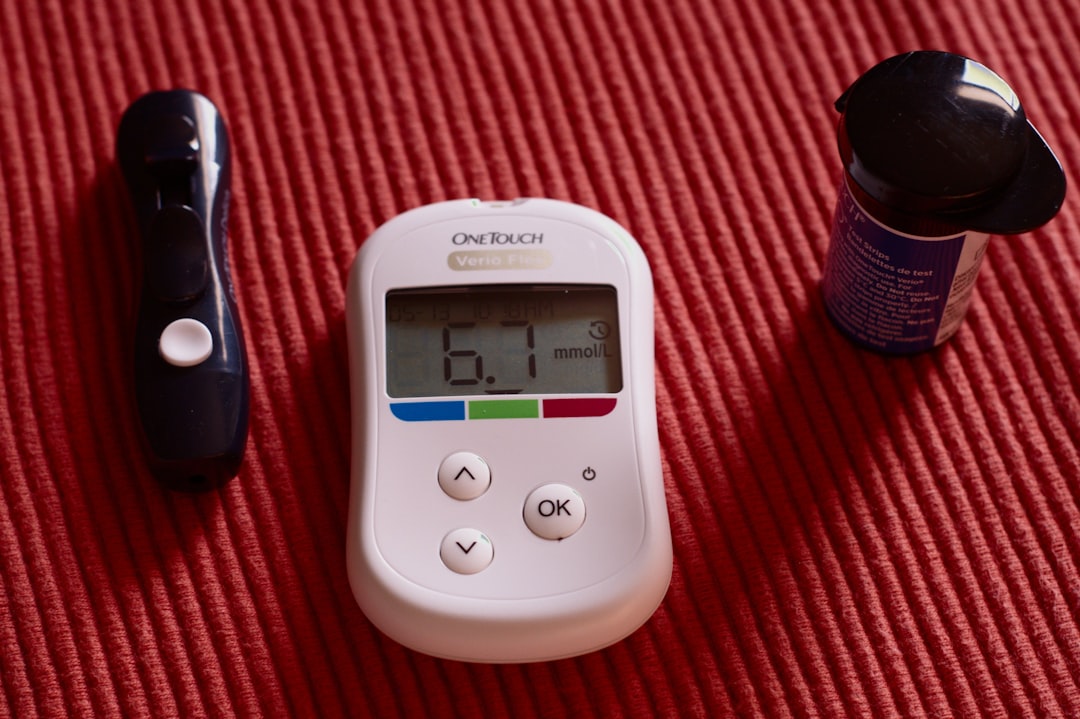 Photo from Unsplash
Photo from Unsplash
Originally Posted On: https://overcomingcandida.com/candida-and-blood-sugar/
- Candida and blood sugar levels are closely connected, with candida overgrowth having a significant impact on blood sugar levels in many ways.
- Candida thrives off of sugar, and high blood sugar levels can make yeast infections more likely. This is why candida and blood sugar levels are closely related.
- Candida and blood sugar levels are also closely linked, as candida has been shown to use even normal levels of blood sugar to develop the invasive filamentous form.
- Candida and blood sugar levels can be affected through various mechanisms, such as interference with the release of hormones like progesterone and estrogen, and inhibiting the functioning of insulin, which is essential for maintaining normal blood sugar levels.
- Symptoms associated with candida overgrowth can include redness or pain in the mouth, cracking and redness in the corners of the mouth, loss of taste, and a cottony sensation in the mouth.
- Certain factors, including a diet high in sugar and refined carbs, high alcohol intake, a weakened immune system, and high stress levels, can increase the risk an imbalance of both Candida and blood sugar levels.
- To combat candida and blood sugar levels which are out of normal range, it is recommended to avoid high-sugar fruits, grains that contain gluten, and certain meats.
- It is important to be aware of the connection between candida and blood sugar levels, as managing one can help manage the other.
Candida is a type of yeast that lives naturally in the human body. In small amounts, it is harmless and even beneficial. However, when candida overgrowth occurs, it can lead to a variety of health problems, including an overgrowth of candida and blood sugar levels which may become imbalanced.
In this article, we will explore the connection between candida and blood sugar levels. We will also discuss what you can do to restore balance to your body.
What is Candida?
Candida is a type of fungus. It naturally exists in the human body, particularly in the digestive tract, mouth, and on the skin. It plays a crucial role in our digestive and immune systems, helping to break down food and fight off harmful pathogens.
However, when the balance of bacteria and yeast in the body is disrupted, candida can overgrow. This overgrowth of candida can cause a range of symptoms, including:
- Digestive issues such as bloating, gas, and constipation
- Skin rashes and itching
- Recurring infections such as thrush or urinary tract infections
- Fatigue and brain fog
- Mood swings and irritability
- Joint pain and inflammation
What is Blood Sugar Imbalance?
Blood sugar imbalance occurs when the body is unable to regulate the amount of glucose in the bloodstream effectively. Glucose is the primary source of energy for the body’s cells. The hormone insulin is responsible for transporting glucose from the bloodstream into the cells.
When blood sugar levels rise too high, insulin is released to lower them. However, if the body becomes resistant to insulin or if too much insulin is produced, blood sugar levels can become imbalanced. This can lead to a range of health problems, including:
- Diabetes
- Obesity
- Cardiovascular disease
- Inflammation
- Cognitive decline
- Mood disorders
How does this relate to candida and blood sugar levels? Keep reading to find out.
The Connection Between Candida and Blood Sugar Levels
Candida, a type of yeast that normally lives harmlessly in the body, can overgrow in certain circumstances and cause infections such as vaginal yeast infections and thrush.
High blood sugar levels in uncontrolled diabetes create an environment that promotes candida growth . Additionally, candida feeds on glucose, which can bring blood sugar levels crashing down, leading to hypoglycemia.
Research has also shown a significant link between high blood sugar and vaginal yeast infections. Furthermore, sugar can promote the formation of candida biofilms, which contribute to candida overgrowth and gut dysbiosis. [8]
Blood sugar fluctuations can also affect histamine levels in the body, which can cause symptoms such as rapid heart rate, anxiety, fatigue, and sleep issues. Parasites can also affect blood sugar levels and it is recommended to test blood sugar levels before and after meals to monitor fluctuations [10].
Candida and blood sugar levels which are imbalanced seem to be intimately linked. When candida overgrowth occurs, it can lead to a variety of digestive issues, including leaky gut syndrome. The lining of the intestines is weakened in a disorder known as “leaky gut syndrome”.
This damage allows undigested food particles, toxins, and candida to leak into the bloodstream. This, in turn, can trigger an inflammatory response, leading to insulin resistance and blood sugar imbalances.
Here is how you can identify candida triggers.
Candida and blood sugar levels also seem to be closely correlated where candida produces enzymes that break down carbohydrates into simple sugars, which can lead to spikes in blood sugar levels.
This triggers the release of insulin. This leads to a cycle of blood sugar highs and lows. This cycle can contribute to insulin resistance and diabetes over time.
Simplified Summary:
Candida is a type of yeast that usually doesn’t harm us, but sometimes it can grow too much and cause infections like thrush or vaginal yeast infections.
Candida likes to eat sugar, and if we have too much sugar in our blood (like in uncontrolled diabetes), it can grow even more.
Candida can also make our gut weaker and cause problems like “leaky gut”. This means that undigested food, toxins, and candida can leak into our blood and make us feel bad. That’s why it is important to watch for candida and blood sugar levels.
Candida and blood sugar levels are related which means blood levels go up and down a lot, which is not good for our body.
To avoid issues with candida and blood sugar levels, it is important to eat healthy, test our blood sugar levels, and avoid things that can trigger candida to grow too much.
What Can You Do About It?
- Follow an Anti-Candida Diet. Here is a list of foods you can eat on an anti-candida meal plan.
- This diet involves eliminating sugar, refined carbohydrates, and other foods. Here is a list of foods to avoid and candida fighting foods you want to incorporate into your daily diet.
- These foods can feed candida overgrowth. Instead, focus on eating whole, nutrient-dense foods such as leafy greens, vegetables, healthy fats, and high-quality protein sources.
- Take Probiotics: Probiotics are beneficial bacteria that can help restore balance to the gut microbiome and prevent candida overgrowth. Look for high-quality probiotic supplements that contain a variety of strains of beneficial bacteria.
- Incorporate Antifungal Foods and Supplements: Certain foods and supplements have antifungal properties that can help to eliminate candida overgrowth. Examples include coconut oil, oregano oil, garlic, and caprylic acid.
Increase Fiber Intake
Increasing your intake of fiber can help to reduce candida overgrowth. Fiber helps to support the growth of beneficial bacteria in the gut and promote regular bowel movements.
Sources of fiber include oats, flaxseeds, chia seeds, and psyllium husk.
Consider an Elimination Diet
An elimination diet is a short-term diet that involves eliminating certain foods to determine which ones may be triggering symptoms. Foods to eliminate include sugar, refined carbohydrates, dairy, gluten, alcohol, and processed foods.
After a period of several weeks, slowly reintroduce foods back into your diet.
Do this one at a time to determine if they are causing a reaction.
Also consider the implementing any of the following suggestions:
- Manage Stress: Chronic stress can disrupt the balance of bacteria and yeast in the gut. This can lead to candida overgrowth and imbalances in blood sugar. Incorporate stress management techniques such as meditation, yoga, or deep breathing into your daily routine.
- Exercise Regularly: Regular exercise can help to regulate blood sugar levels and improve insulin sensitivity. Strive for at least half an hour of physical activity at a moderate level on most days a week.
- It is vital for your health to get enough rest. A minimum of seven to eight hours of sleep each night is recommended to help maintain a healthy blood sugar level.
- If you are experiencing symptoms of candida overgrowth or blood sugar imbalances, it is important to work with a healthcare professional. This professional can help to determine the underlying cause. They can also help to develop an effective treatment plan.
Can a yeast infection raise blood sugar?
There is evidence to suggest that high blood sugar levels can increase the risk of yeast infections, particularly in individuals with poorly controlled diabetes. Yeast feeds off of sugar, and when blood glucose levels are high, extra sugar may get into mucus, sweat, and urine, leading to overgrowth of yeast [4].
Can candida cause diabetes?
Yes, candida overgrowth can cause diabetes. Research has shown that candida can drive the production of Th-17 immune cells that are also known to cause diabetes. In fact, Candida albicans, the most common pathogen causing balanitis, is also the dominant cause of vulvovaginal candidiasis in women with diabetes.
Additionally, Candida can lead to diabetes by increasing protease, an enzyme that is linked to hypertension. However, it’s not well-known by medical practitioners. People with diabetes have been found to have a higher incidence of candida infections affecting various tissues and organs, and excess sugars can fuel the rapid growth of candida. Refer to this article for more information about digestive enzymes for candida: https://overcomingcandida.com/digestive-enzymes/
What are treatment of fungal infections in diabetic patients?
Fungal infections can be a common problem among people with diabetes . Diabetes can make the body more susceptible to fungal infections, and high blood sugar levels can contribute to their development.
Treatment options for fungal infections in diabetic patients include topical antifungal creams, ointments, and suppositories for mild to moderate infections.
For more severe infections, prescription oral antifungal medications may be necessary. Additionally, low-temperature plasma treatment has been investigated as a potential treatment for fungal-infected diabetic wounds [6].
Preventive measures to reduce the risk of fungal infections in diabetic patients include wearing breathable clothing and avoiding tight-fitting pants and footwear, keeping blood sugar levels under control, and practicing good hygiene. If you suspect a fungal infection, it’s important to seek medical treatment promptly to prevent complications [7].




